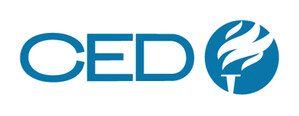News provided by
Committee for Economic Development of The Conference Board (CED)May 06, 2022, 07:00 ET
NEW YORK, May 6, 2022 /PRNewswire/ -- With Mother's Day approaching, the Committee for Economic Development, the public policy center of The Conference Board (CED) is recognizing and celebrating the role of all mothers—those who choose to work in the home, and those who work outside of the home supporting the needs of their children.
In 2021, more than 29 million women (37.5 percent) ages 18-54 were mothers of children aged 14 or younger. Of these mothers, 20.9 million (71.8 percent) were in the labor force. In fact, mothers with children ages 5-14 participate in the labor force at the highest rate (74.4 percent). Traditionally, mothers provide most of the primary care duties for children. Thus, access to affordable child care is linked to the decision of mothers to enter, return, or remain in the labor force.
As the US grapples with historic labor shortages and a record-high quits rate, the ability for many parents, especially mothers, to participate in the labor force depends on child care access. In April, CED released a report, The Economic Role of Paid Child Care in the US: Part 2 – Labor Force Participation, which uses timely data to better understand labor force participation for mothers with children over time, as well as trends across gender, race, marital status, and income.
For economic recovery and growth, the US needs to increase its pool of qualified workers to fill critical staffing shortages. Working mothers could help provide a much-needed infusion into a struggling labor force, but this will require an immediate and sustained change in the way policymakers and business leaders view child care as both a recruitment and retention tool. The most recent US Census Bureau Household Pulse Survey (March 30 – April 11, 2022) found that 4.8 million individuals were not working because they were caring for children not in child care or school.
Expanding access to more affordable child care would enable mothers—particularly the two-thirds in married households—to enter, return, or remain in the workforce. Accompanying CED's report is a series of more than 20 interactive data visualizations that enable users to see labor force participation by individual characteristics over time throughout the U.S. and within states.
Developing effective policy approaches begins with understanding the data. CED's new report, The Economic Role of Paid Child Care in the US: Part 2 – Labor Force Participation, is part of a four-part series. The first report, The Economic Role of Paid Child Care in the US, was released in February.
About CED
The Committee for Economic Development (CED) is the public policy center of The Conference Board. The nonprofit, nonpartisan, business-led organization delivers well-researched analysis and reasoned solutions in the nation's interest. CED Trustees are chief executive officers and key executives of leading US companies who bring their unique experience to address today's pressing policy issues. Collectively they represent 30+ industries, over a trillion dollars in revenue, and over 4 million employees. www.ced.org
About The Conference Board
The Conference Board is the member-driven think tank that delivers trusted insights for what's ahead. Founded in 1916, we are a non-partisan, not-for-profit entity holding 501 (c) (3) tax-exempt status in the United States. www.conference-board.org
SOURCE Committee for Economic Development of The Conference Board (CED)

WANT YOUR COMPANY'S NEWS FEATURED ON PRNEWSWIRE.COM?
Newsrooms &
Influencers
Digital Media
Outlets
Journalists
Opted In





Share this article